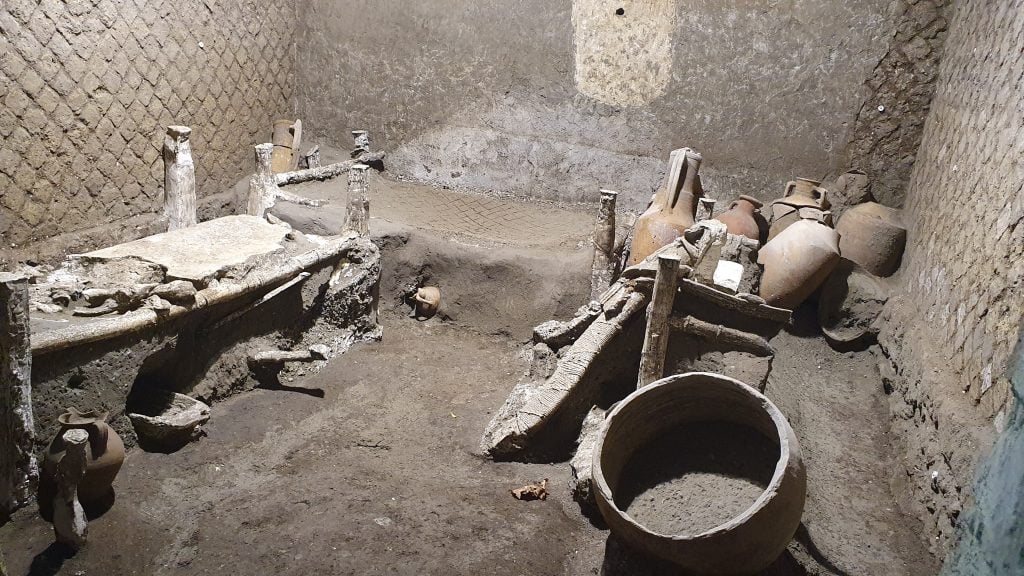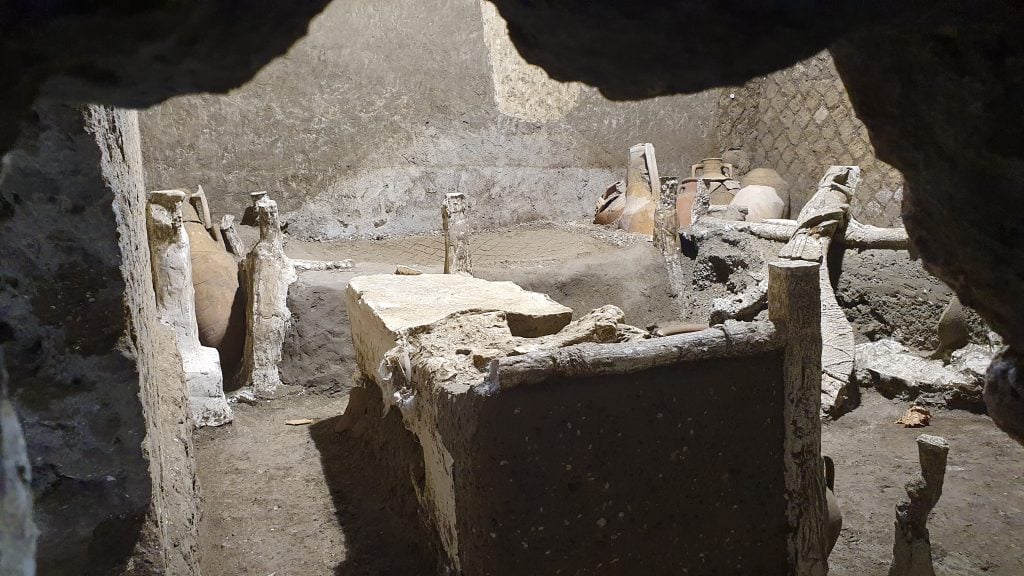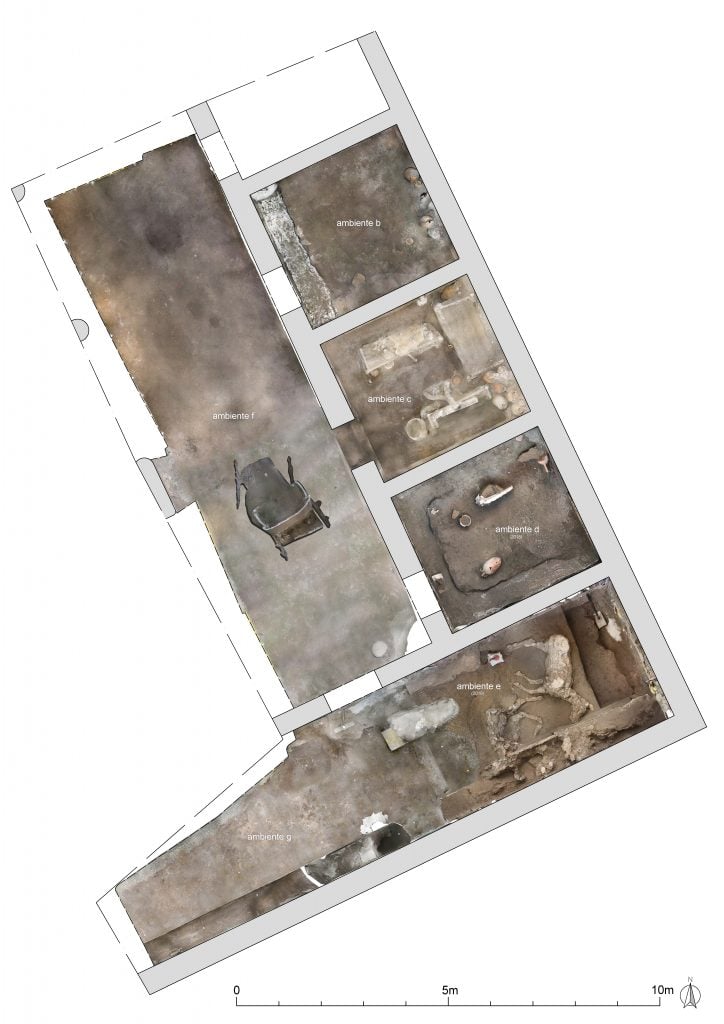Archaeology & History
The Discovery of Slaves’ Quarters in Pompeii Provides a Rare Insight Into Life in Roman Times
The newest find reveals the living conditions of people who were often left out of historical records.

The newest find reveals the living conditions of people who were often left out of historical records.

Amah-Rose Abrams

Archaeologists have discovered slave quarters at the ancient site of Pompeii. The room, which is uniquely well preserved, sheds a light on what life was like for enslaved people during the Roman Empire.
The discovery was made at Civita Giuliana, a villa on the outskirts of Pompeii where remains of a carriage and horses were found earlier this year. The recently uncovered room contains three beds, a chest filled with fabric, and other objects and equipment for tending horses.
“This is a window into the precarious reality of people who seldom appear in historical sources that were written almost exclusively by men belonging to the elite, and who as a result risk remaining invisible in the great historical accounts,” said Gabriel Zuchtriegel, director general of the Archaeological Park of Pompeii, in a statement. The city of Pompeii was covered in volcanic ash from Mount Vesuvius in 79 A.D.

Civita Giuliana at Pompeii. Photo: Parco Archeologico di Pompei
Archaeologists believe that the room belonged to a small family. Revealed through a combination of excavating and plaster-casting are three beds, two of which are sized 1.7 meters (5.5 feet) and therefore are believed to have been for adults. A third bed measures 1.4 meters (4.5 feet) and is thought to have been for a child or a young man. Made of two planks of wood with a webbed base made of rope with a fabric cover, the beds could be adjusted in size for whoever slept in them.
Personal objects discovered underneath the beds include ancient vessels, called amphorae, which are thought to have been for the storage of small possessions. Archeologists also found a chamber pot and a wooden chest containing metal and fabric fragments, thought to be horse tackle. The room seems to have functioned both as a bedroom and a storage space given that eight amphorae were found in the space.

The room discovered at Pompeii. Photo: Parco Archeologico di Pompei
“It is a case in which archaeology helps us to discover a part of the ancient world which we would otherwise know little about, but which is nonetheless extremely important,” said Zuchtriegel.
Archaeologists at Pompeii are currently making their way through Civita Giuliana in an effort to combat looting and preserve the site in suburban Pompeii. Last year, they discovered two bodies thought to be a wealthy landowner and his slave. Earlier this year, they unearthed a chariot and horses from the stables of the property.